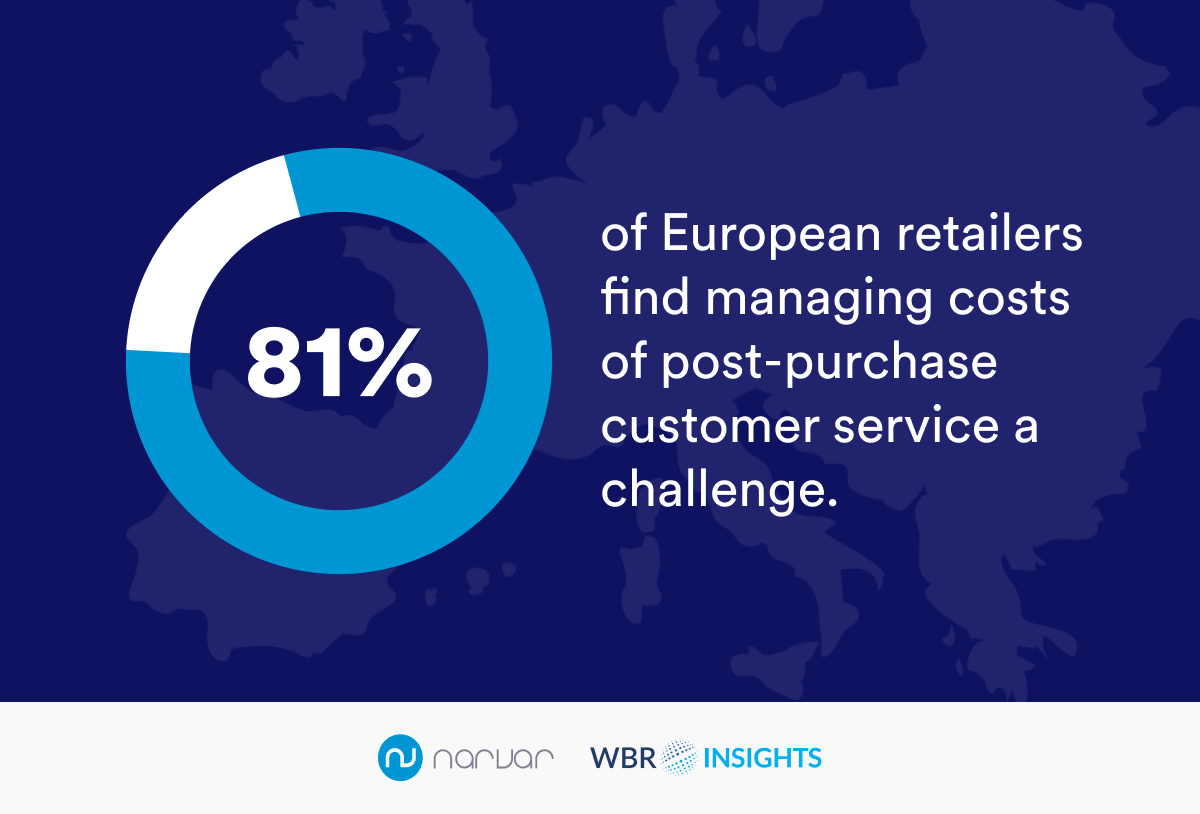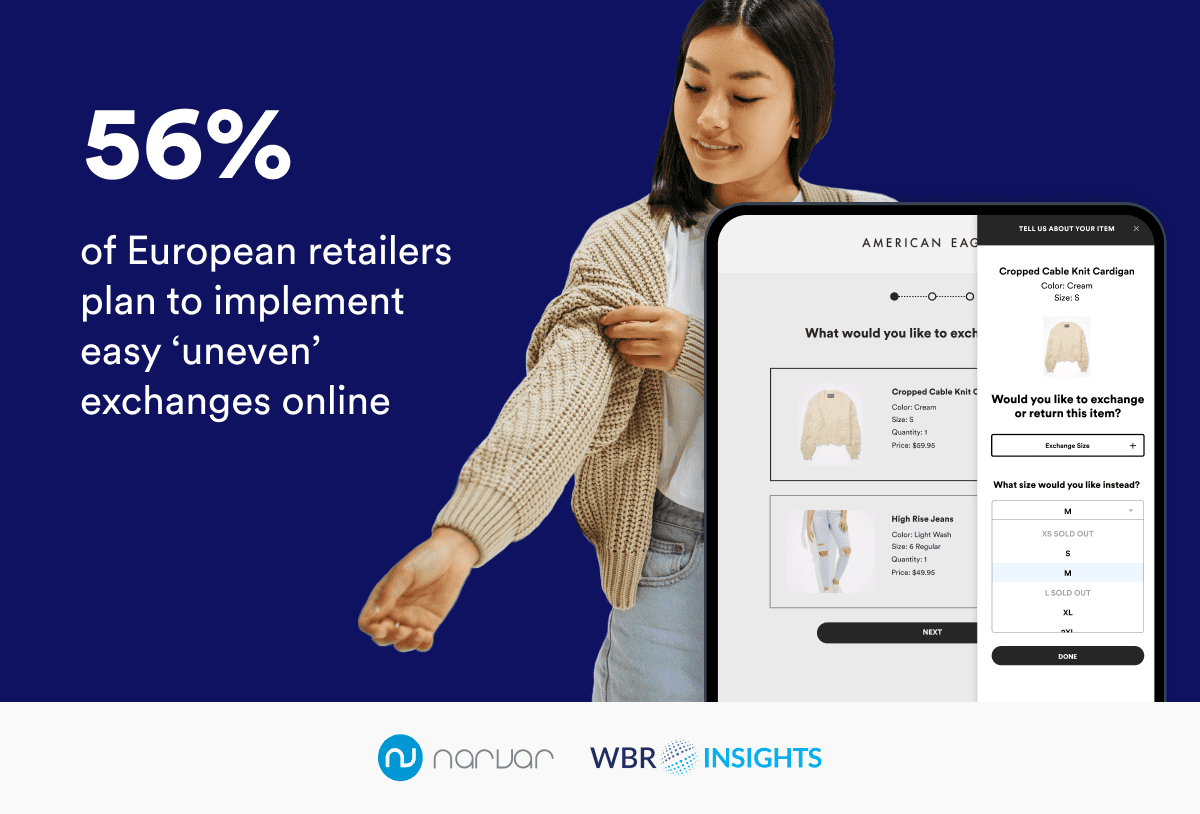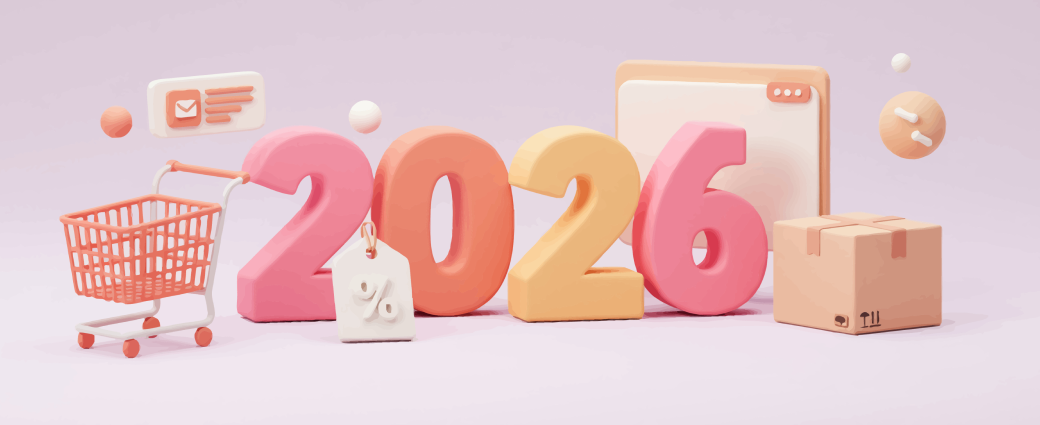

AI-powered delivery date estimates to boost conversion
Give shoppers peace of mind and protect and grow your bottom line
Personalized tracking experiences to build brand loyalty
Returns and exchanges management to mitigate fraud and reward best customers
Proactive communication to drive customer lifetime value
Delivery claim management to tackle fraud and build trust
Returns, Exchanges, and Other Opportunities in European Retail

Managing post-purchase costs, personalizing returns, and enabling uneven exchanges are just some of the things European retailers are grappling with. To uncover more of the obstacles (as well as the opportunities) facing the retail industry in Europe, Narvar partnered with WBR Insights to compile some powerful observations and expert advice.
5 key findings
- Cost management is the most common challenge for European retailers when it comes to the post-purchase experience.
- Personalizing returns based on consumer behavior is becoming a need-to-have for retailers.
- Offering uneven exchanges is an opportunity—only 12% of European retailers do this right now.
- Most retailers aim to resell more returns through primary channels in the future.
- European retailers are missing something when it comes to sustainability.
Costs pose the biggest post-purchase challenge
Managing costs is retailers' biggest post-purchase challenge—specifically the cost of returns, the expense of customer service, and the high-price of packaging.
To manage these costs without sacrificing customer satisfaction, retailers are implementing new solutions that emphasize efficiency.

For example, many retailers are implementing self-service returns portals—consumers love the convenience while retailers love seeing returns initiated sooner and valuable shopper data in the process.
(Keep reading here for additional advice on managing the costs of your post-purchase customer experience.)
Personalized returns are on the agenda
About 80% of UK retailers and 63% of European retailers plan to implement returns personalization based on customer behavior or profiles.
It is now clear that a “one-size-fits-all” approach to returns is not sustainable in retail. Setting distinct return flows, policies, and fees for different customer segments (e.g., high-value customer versus first-time buyer) or product categories will become the new norm as retailers strive to deliver a tailored returns experience.
From personalized return notifications to custom return policies, there are ample opportunities to increase lifetime value.

Uneven exchanges are an untapped opportunity
The majority of consumers replace the item they return from the same retailer as long as the experience of doing so is easy—that’s why a seamless exchange process is so important.
Among European retailers even exchanges are common, but where retailers differ is in the offering of ‘uneven’ exchanges. Enabling uneven exchanges improves retailers’ ability to “save the sale” more often.

More items for resale, less waste
Increasing the resale volume (i.e., the number of returns resold to recapture revenue and reduce waste) is of huge importance to European retailers, as it reduces commercial waste and salvages revenue at the same time.
Accelerating the returns process is critical to increasing resale volume—the more convenient it is for the consumer to make a return, the faster they’ll do it.
Additionally, consolidation and smart dispositioning helps retailers get products ready for resale with greater efficiency. Not only does this benefit the bottom line, but it also allows retailers to reduce their carbon footprint and better overcome the obstacle of supply-chain disruption.

European retailers are missing a trick when it comes to sustainability
With 25% of ecommerce emissions blamed on returns, there’s a lot of room for improving sustainability. Yet few European retailers plan to make simple changes that will reduce their carbon footprint (while also making life easier for consumers and reducing operational costs).
- 74% don’t plan to implement a ‘keep the item’ policy

“Keep the item” policies are an opportunity to reduce emissions—if an item is damaged or low-value, it (probably) can’t be resold. Rather than waste money, packaging, and fuel on processing the return, tell customers they can keep the item.
- 52% don’t plan to use printerless/label-less returns
Approximately 80% of pre-printed return labels never get used. By implementing a labeless return process, retailers could save a ton of paper and money. For example, Narvar’s retail clients avoided printing 35 million labels last year by going labeless—that’s about 11 Eiffel Tower’s worth of paper.
Get even MORE fantastic insights from Narvar + WBR Insights by reading the full report here.

























